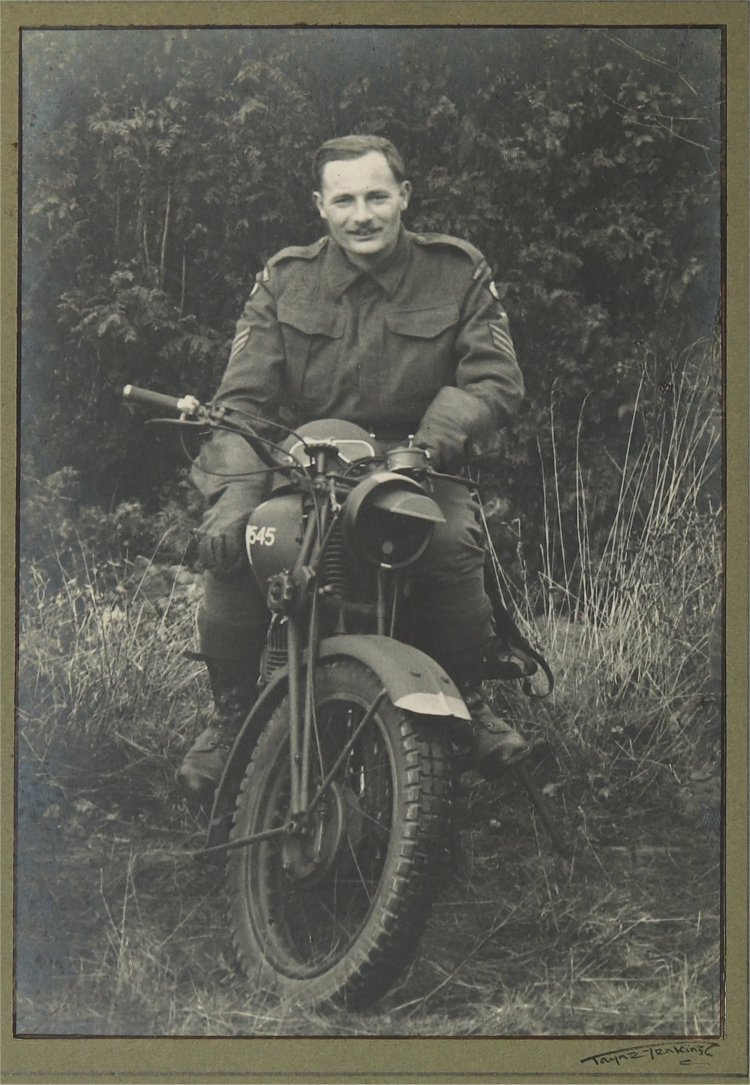Introduction
On May 1st a cavalcade of some 20+ motorcycles left the National Motor Cycle Museum in Solihull heading for the VMCC AGM at the National Memorial Arboretum. This ride in, organised by Neil Trinder, officially launched “Duty to Ride” intended to raise funds for the design, installation and maintenance of a permanent memorial dedicated to those despatch riders and couriers, both military and civilian, that lost their lives while riding in the course of their duties.
Of the 20 riders winding their way through the villages and towns en route almost half were ex-WD bikes including 2 Matchless G3s, 2 BSA M20s, a Velocette, a Royal Enfield and several Harley Davidsons.Moreover, several of the riders had donned full, period, military attire. Together they made quite a spectacle drawing appreciative waves from the public that lined the route.
On arrival the bikes lined up alongside the Aspect building within the arboretum and made an impressive backdrop for the VMCC Annual General Meeting.
Our aim is to raise sufficient money to commission a relevant and appropriate memorial to the brave men, and women, that deliver vital messages and packages, often under fire and always with great urgency. Even civilian riders face daily danger to deliver their vital load in today’s busy traffic. It is hoped that Duty to Ride will be supported by all motorcyclists, clubs and associations from around the world who wish to recognise the contribution made by the gallant riders. Further information can be found at www.dutytoride.org. Donations can be made through a dedicated Just Giving page.
Titch Allen - Despatch Rider

My father did not talk much about his time in the army when I was growing up, I know he was a despatch rider in the Royal Signals and attained the rank of Sergeant. The tales he did tell were mostly of his time in England before being shipped off to the continent. Like many young, keen motorcyclists he volunteered following articles in the motor cycle press (Motorcycling and The Motor Cycle). The message being that if you wanted to be a despatch rider you needed to volunteer or else you might be in the infantry. Of course, the army was not really ready for this influx of keen motorcyclists eager to be DRs, they hardly had any machines for one thing, and this was before the ignominious retreat from France and the abandonment of so much equipment at Dunkirk.
Being a proficient typist (he was a journalist before the war) Dad was assigned to the typing pool and bound to a boring desk job while the “real” DRs were off riding bikes. The winter of 1940 was particularly harsh and many of the regular army despatch riders were injured as they had never been trained to ride in snow and ice. It was not long before the ‘volunteers’ were called upon to fill the gaps and Dad and his friends finally got to ride.
For much of the war Dad was stationed in England and not until after D-Day did he get shipped to the continent. His time in England was spent running various errands, performing exercises (like how to make an internal combustion engine completely water tight) and often volunteering for duties that enabled him to ride a bike and hopefully get to visit his wife.
One such occasion involved a wager accepted by his CO that a DR could deliver messages to a number of depots around the country faster than the teleprinter favoured by some big wheel in Ordnance. It sounds crazy today but in fact, by riding hard through the night, Dad was able to complete the exercise in less than 48 hours (including a stop-over at home) whereas the teleprinter messages took over a week. As was so often the case, the lines were congested with normal traffic and, with no high priority, the messages had had to wait their turn at the bottom of the pile.
There are several other stories about his time in the army mentioned in his book, Titch - The Founders Tale. If you are interested to find out more about his time as a DR or indeed the rest of his fascinating life I suggest you obtain a copy and read it yourself.
Steve Allen